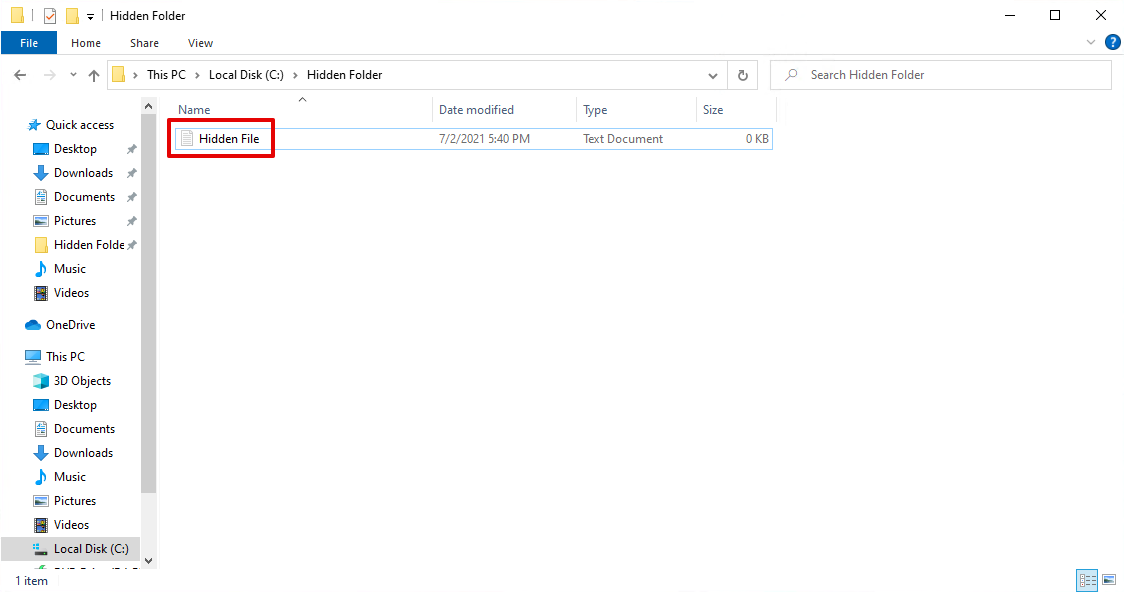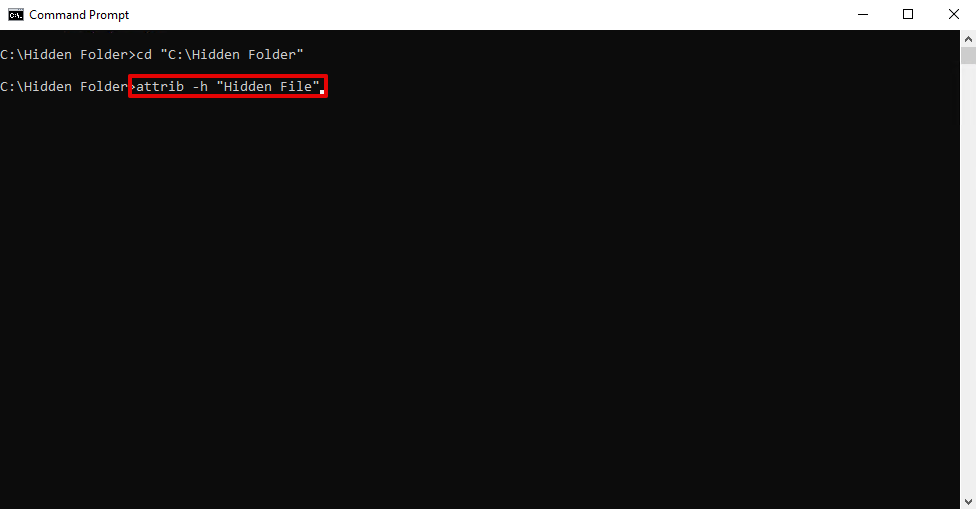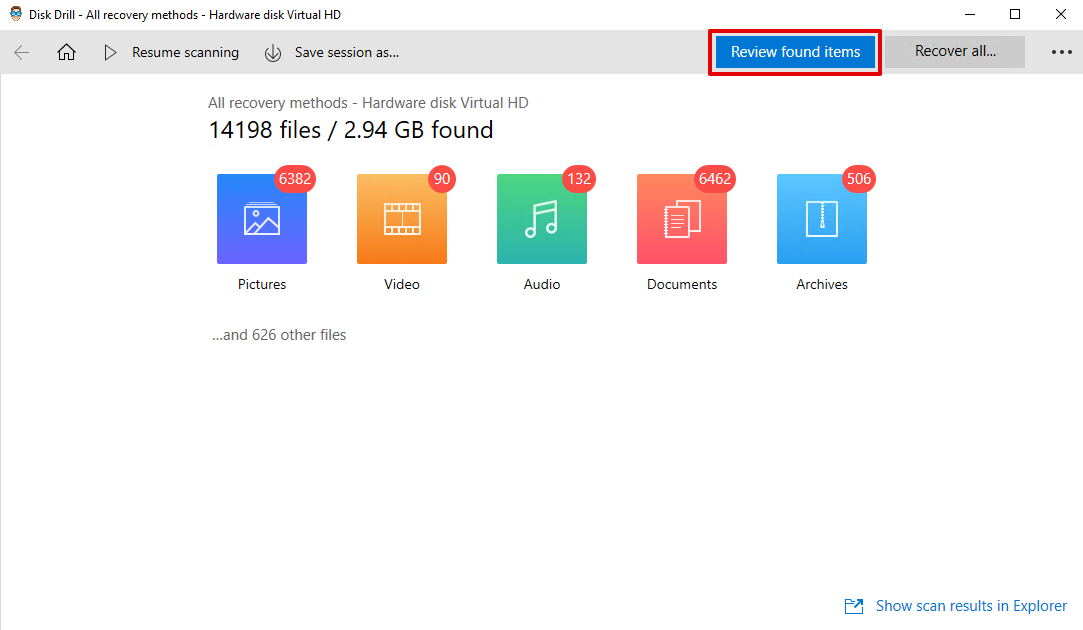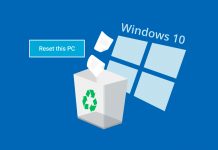
Every Windows computer has hidden files. Of course, not many know this as the average computer user will never need to seek them out. However, just because the files are hidden doesn’t mean they’re not susceptible to loss due to accidental deletion, formatting, or corruption.
Recovering hidden files and folders is definitely possible. In fact, it’s just as easy as recovering visible files. Read on to find out how you can retrieve hidden files from your Windows computer.
Go to data recovery solution ⤵
How to Show Hidden Files on Your Computer
Before we get into how to restore hidden files, we have to first make sure we can locate hidden files. Few are aware that Windows hides some files on your computer by default. These are typically system-related files that are hidden because they shouldn’t be tampered with or deleted. Regardless, they exist, and it’s relatively easy to uncover hidden files using Windows Explorer.
Here’s how to find hidden files on computer:
- Open File Explorer.

- Click on the View tab, then click Options.

- Click to the View tab, then under Hidden files and folders, make sure the radio button for Show hidden files, folders, and drives is enabled. Click Apply then OK to finish.

How to Unhide Hidden Files or Folders
Hidden files and folders are invisible due to a specific attribute that has been applied to them. When this attribute is active, the files won’t appear unless you’ve specifically set your system to show them using the previous steps. Once this attribute is removed, the files and folder will show up like normal.
Method 1:Unhide files or folders with Windows Explorer
Just like showing hidden files, folders, and drives, making files visible is super easy using Windows Explorer.
- Open File Explorer and navigate to the folder that contains the files you want to unhide.

- Right-click on the file or folder you want to unhide and click Properties.

- Deselect the Hidden attribute, click Apply then OK. The file or folder will be visible again. For folders, you will need to choose whether you want to apply the changes to the folder only, or all subfolders and files within that folder.

Method 2:Unhide files or folders with Command Prompt
If you prefer using a command-line interface, you can unhide files by removing the hidden attribute. This can be performed at a folder level, or to individual files.
- Press Windows + S and search Command Prompt. Open it.

- Type
cd “C:Hidden Folder”. Replace the quoted text with the location of your files/folders. If there is a space in the directory location, be sure to include it within quotation marks. Press Enter.
- Type
attrib -h “Secret File”. Replace the quoted text with the name of the file you want to unhide. If it states that the file cannot be found, try adding the file extension to the end of the filename.If you want to remove the hidden attribute from all files and subfolders in the selected folder, use the command attrib -h /s /d instead.

You can hide the files again by replacing the -h command with +h, which will add the attribute back.
How to Recover Deleted Hidden Files on Windows
Even though the files are hidden, the data still resides on the storage media. The only difference between visible and hidden files or folders is an attribute. Otherwise, everything else in terms of recovery is the same. Until the physical location that once held the data is overwritten, there’s a chance of restoring hidden files.
If you’ve lost or deleted some hidden files or folders, you can recover them using data recovery software. Disk Drill is one such data recovery solution that’s trusted by many because of its robust recovery capabilities and user-friendly interface. In only a few clicks, you can recover deleted folders, pictures, videos, and many other forms of data.
Follow the below steps on how to recover hidden files.
- Download Disk Drill. Once downloaded, install and open it.
- Select the drive that contains the hidden files or folders that you want to recover. Click Search for lost data. This will locate any hidden files that have been deleted.

- When the scan has finished, click Review found items.

- Here you will find a list of the files that can be recovered. If you click Filters, you will see that the Show hidden system files is enabled by default. Select the files you want to recover by checking their box.

- When you’re ready, click Recover.

- Specify the location you want the files to be recovered to. It’s good practice to choose a location that’s not the same drive that the files were lost from. Press OK.

Hidden files on your PC that have been restored can be found in the specified recovery location. Disk Drill can be used to recover data in any situation, like recovering files after a Windows update, and it contains features that can protect your data against future data loss situations.
FAQ
- Open File Explorer and navigate to the folder that contains the hidden files.
- Click the View tab and ensure that the Hidden items checkbox is ticked.
- Right-click the files you want to delete and click Delete.
- Open File Explorer and navigate to the parent folder that contains the hidden folder.
- Click the View tab at the top and make sure the Hidden items checkbox is ticked.
- Right-click the hidden folder and click Properties.
- Deselect the Hidden attribute, click Apply then OK.
- Click Start, then open the Control Panel. Go to Appearance and Personalization.
- Click Folder Options, then click on the View tab.
- In the Advanced settings sections, click Show hidden files, folders, and drives. Click OK.




